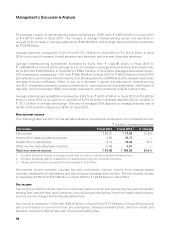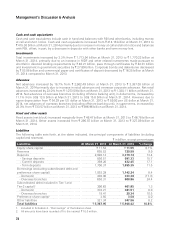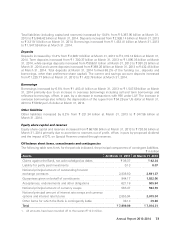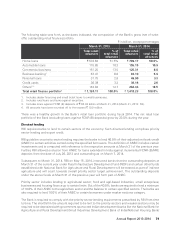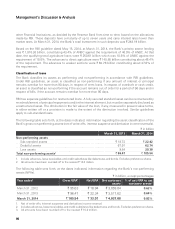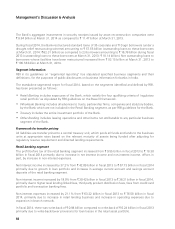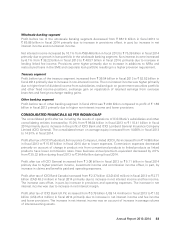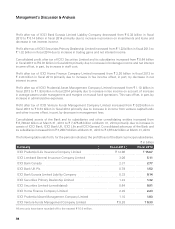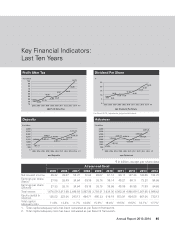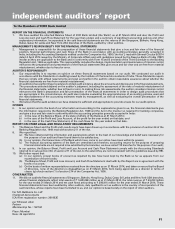ICICI Bank 2014 Annual Report Download - page 79
Download and view the complete annual report
Please find page 79 of the 2014 ICICI Bank annual report below. You can navigate through the pages in the report by either clicking on the pages listed below, or by using the keyword search tool below to find specific information within the annual report.Annual Report 2013-2014 77
extreme but plausible scenarios on the Bank’s risk profile and capital position. Based on the Bank’s Board-
approved stress testing framework, the Bank conducts stress tests on various portfolios and assesses the
impact on the capital ratios and the adequacy of capital buffers for current and future periods. The Bank
periodically assesses and refines its stress tests in an effort to ensure that the stress scenarios capture material
risks as well as reflect possible extreme market moves that could arise as a result of market conditions. The
business and capital plans and the stress testing results of the group entities are integrated into the internal
capital adequacy assessment process.
Based on the internal capital adequacy assessment process, the Bank determines the level of capital that
needs to be maintained by considering the following in an integrated manner:
• strategic focus, business plan and growth objectives;
• regulatory capital requirements as per RBI guidelines;
• assessment of material risks and impact of stress testing;
• perception of credit rating agencies, shareholders and investors;
• future strategy with regard to investments or divestments in subsidiaries; and
• evaluation of options to raise capital from domestic and overseas markets, as permitted by RBI from
time to time.
Key updates
On March 27, 2014, RBI deferred the introduction of capital conservation buffer (CCB) by a year to March
31, 2016. Basel III guidelines will now be fully implemented in India by March 31, 2019.
In December 2013, RBI issued draft guidelines on implementation of countercyclical capital buffer (CCCB).
According to the guidelines, the CCCB would range from 0% to 2.5% of risk weighted assets of the bank.
The variation in the credit-to-GDP ratio from its long-term trend would be a key parameter for identifying
business cycles.
In December 2013, RBI issued a draft framework on capital surcharges for domestic systemically
important banks (D-SIBs). The higher capital requirements applicable to D-SIBs would be implemented
in a phased manner from April 2016 to April 2019. D-SIBs would be required to have additional Common
Equity Tier 1 capital ranging from 0.2% to 0.8% of risk weighted assets.
RBI, through its circular in December 2013, deferred the introduction of credit value adjustment risk
capital charge for over the counter derivatives. Credit value adjustment captures risk of mark-to-market
losses due to deterioration in the credit worthiness of counterparty. Credit value adjustment risk capital
charges is effective from April 1, 2014.
In January 2014, RBI issued the final guidelines on the treatment of exposures to entities with unhedged
foreign currency exposure wherein it introduced incremental provisioning and capital requirements for
bank exposures to entities with unhedged foreign currency exposures based on the likely loss to the
entity due to movement in foreign exchange rates. The requirements are effective from April 1, 2014.
The Bank continues to monitor further developments and believe that its current robust capital adequacy
position and demonstrated track record of access to domestic and overseas markets for capital raising
will enable us to adapt to the Basel III framework.



